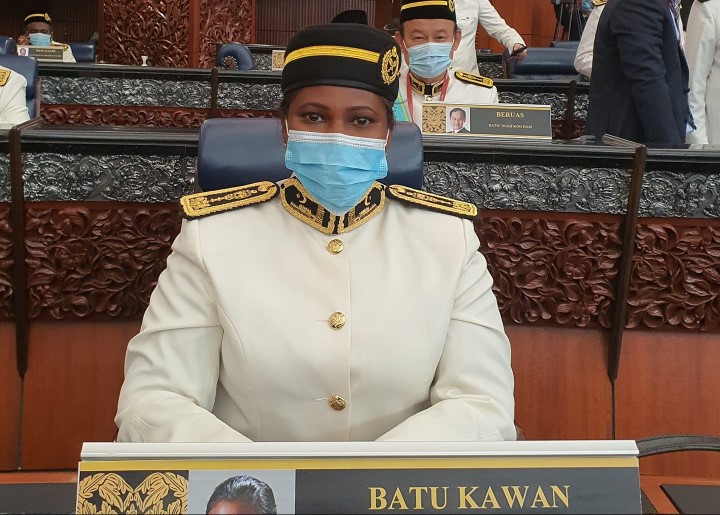KUALA LUMPUR, Nov 11 — Experts have urged employers to recognise migraine as a serious medical condition by providing workplace accommodations so that workers with migraine can continue to be productive.
Neurologists described migraine as a disabling neurological disorder that can affect a sufferer’s quality of life and work if it is severe.
According to Prof Dr Tan Hui Jan, consultant neurologist and head of the neurology unit at Hospital Canselor Tuanku Muhriz, the prevalence of migraine in Malaysia is about 9 per cent. It’s more common in young adults aged 30 to 45. She said migraine is also two to three times more common in women than men.
Migraine causes moderate to severe headache, with attacks lasting between four and 72 hours with variable frequency. It’s often associated with nausea, vomiting, and heightened sensitivity to loud sounds and bright lights. Mild migraine cases may get attacks once or twice a month, according to Dr Tan, but severe cases may suffer daily attacks. Migraine can be classified as either episodic (14 or fewer migraine days a month) or chronic (15 or more migraine days a month).
“The inability to work and leads to work-related anxiety and depression. Of course the quality of life will be reduced and it impairs the person to perform his work and his daily activities. Migraine impairs the productivity and effectiveness of the workforce,” Dr Tan told CodeBlue in a recent interview.
“Most employers don’t recognise migraine as serious enough as it is very difficult for people to understand as they look fine outwardly. It’s the same problem as patients with epilepsy also.
“However, it is still necessary to get MC once the person is absent from work. I would agree that it should be taken seriously, but most patients don’t get proper treatment and they tend to source out from non-pharmacological methods.”
Triggers for migraine include certain food and drinks like cheese, chocolate, coffee, and alcoholic beverages, as well as smoking, menstruation, hunger, stress, lack of sleep. Oral contraceptives can also trigger migraine, said Dr Tan.
Non-pharmacological methods refer to avoiding triggers of migraine and practicing measures like getting sufficient sleep and rest, limiting alcohol and caffeine intake, and yoga, among others.
Dr Tan also cited medicines for migraine, such as aspirin to help in acute attacks, as well as preventive treatment to reduce the frequency and severity of a migraine attack like calcium channel blockers, beta blockers, tricyclic antidepressants, anti-epileptics, and injectables.
She urged workplaces to provide a room for employees to rest when they suffer a migraine attack. Staff with migraine should also be allowed to take a short break from working at their computer. Workers with migraine not to skip lunch as hunger often worsened migraine.
Managing Migraine At Work

Batu Kawan MP Kasthuri Patto first experienced migraine when she was 12, suffering bouts of vomiting with a throbbing headache throughout her teenage years and young adulthood.
“Normally, it starts with a pounding feeling on one side of your head, the veins at my temple can be felt at the fingertips. The throbbing continues like a large drum banging in your head. You feel nauseous and the nausea gets worse as the headache amplifies.
“If left untreated with painkillers, I normally vomit and then lie down in a quiet room, without sound or light and sleep,” Kasthuri told CodeBlue in an interview.
As a lawmaker now, Kasthuri said whenever she suffers migraine attacks during events or meetings, she will take painkillers and use an essential oil. She throws up or heads back home if necessary.
The Penang lawmaker acknowledged some difficulty with migraine at her job.
“But I manage it,” Kasthuri stressed. “Sometimes I get beaten by it.”
She described migraine as “really crippling” if attacks come monthly or alternate months.
“Also the waiting list in government hospitals to do an MRI is super long, which makes people self-medicate, especially when diagnosis is difficult.”
Migraine Should Be Diagnosed And Treated Properly
Dr Goh Khean-Jin, professor and head of the Division of Neurology at the Department of Medicine in the Faculty of Medicine at Universiti Malaya, said employers could modify a migraine sufferer’s job activity and the workplace to eliminate migraine triggers.
“I think it would be helpful to confirm the diagnosis of migraine in persons and to advise them correctly in terms of treatment etc. It may also help them in the choice of occupation,” he told CodeBlue.
He added that some employers do recognise migraine as a workplace problem, but said it also depended on the worker’s job scope.
“If treated properly, they may be able to work as per normal without taking too much absenteeism. My view is that if migraine is diagnosed and with proper advice and treatment many migraneurs will be okay in their employment.”
Migraine Leading Cause Of Disability Among Neurological Disorders
According to an Economist Intelligence Unit (EIU) 2019 report on migraine, multiple sclerosis, and Alzheimer’s disease, migraine affects about 1.3 billion people globally, based on 2017 statistics.
Migraine, according to the EIU report, represents 2.9 per cent of years of life lost to disability, making it the leading cause of disability among all neurological disorders.
EIU cited a study of 11,000 people in 31 countries that found 60 per cent of employed people with severe migraine missed, on average, a week of work per month. The study estimated costs of migraine running into US$22 billion per year in the United States, with the costs related to impact on quality of life, work, and overall productivity.
“Just as depression represents more than just simple unhappiness, migraine is more than just a serious headache,” EIU quoted Peter Goadsby, professor of neurology at King’s College London, as saying.
The EIU report urged employers to provide workplace accommodations for employees with migraine, such as flexible or reduced working hours, frequent breaks, and a work-from-home policy, besides taking into account the role of stress in migraine attacks.
Compensate Work-Aggravated Diseases Like Migraine

Dr Marzuki Isahak, a public health specialist and occupational safety and health expert at Universiti Malaya Medical Centre (UMMC), said migraine is currently not listed as an occupational disease in Malaysia, but it can be categorised as a work-aggravated disease.
A work-aggravated disease is an illness that one already suffers before starting work, but whose condition worsened after work. An occupational disease, on the other hand, means an illness contracted solely from the workplace, such as occupational asthma due to chemical exposure or musculoskeletal injury from doing things like heavy lifting.
“Migraine is multifactorial. It’s difficult to determine the sole cause of migraine. It can be psychosocial hazards, exposure at the workplace, for example, very high workplace demand, lack of supervisor support. Stress can lead to a migraine attack, for example, very high physical activity,” Dr Marzuki told CodeBlue in an interview.
“Your diet — high content of chocolate — might trigger migraine attacks. To say migraine attacks are solely due to occupation is kind of difficult. The rest can be domestic stress or stress in a traffic jam.”
He said only occupational diseases are entitled to compensation from the Social Security Organisation (Socso), but not work-aggravated diseases, unlike countries like Singapore that pay out some compensation (though not 100 per cent) for work-aggravated illnesses such as work-aggravated asthma.
“We need to recognise work-aggravated diseases as well, for example, like migraine.”
Dr Marzuki urged employers to be more supportive towards workers with migraine, such as by giving the latter time breaks, short naps, and sick leave.
“Under the Occupational Safety and Health Act (OSHA) 1994, it’s the responsibility of the employer to take care, to ensure that the workplace is safe so there’s no occurrence of occupational disease or work-aggravated disease.”









